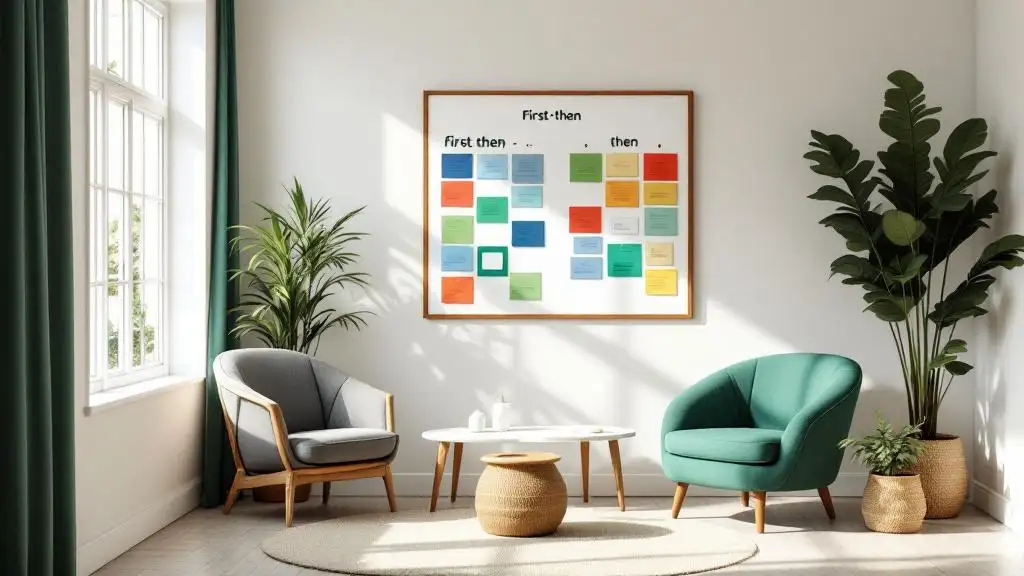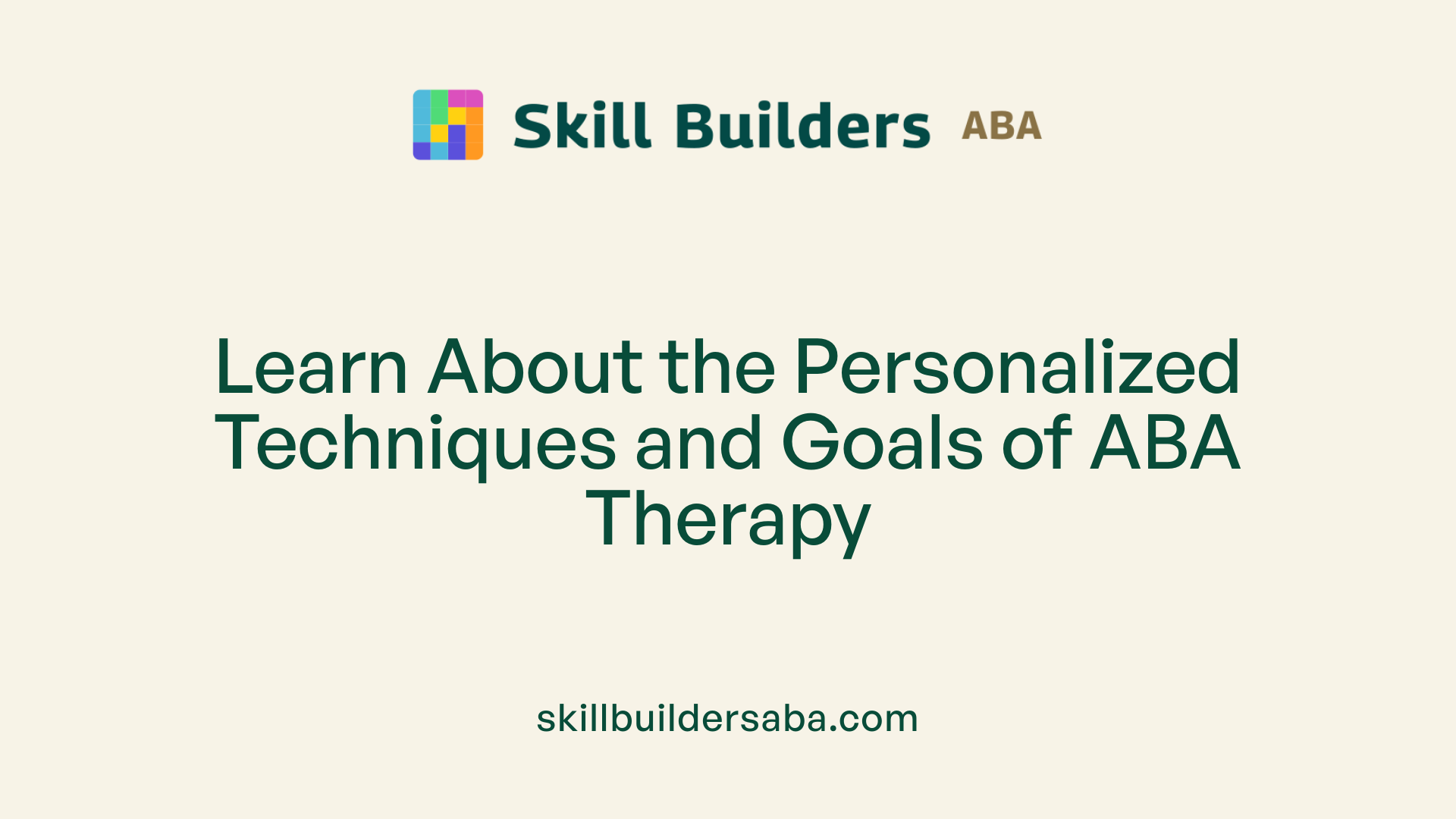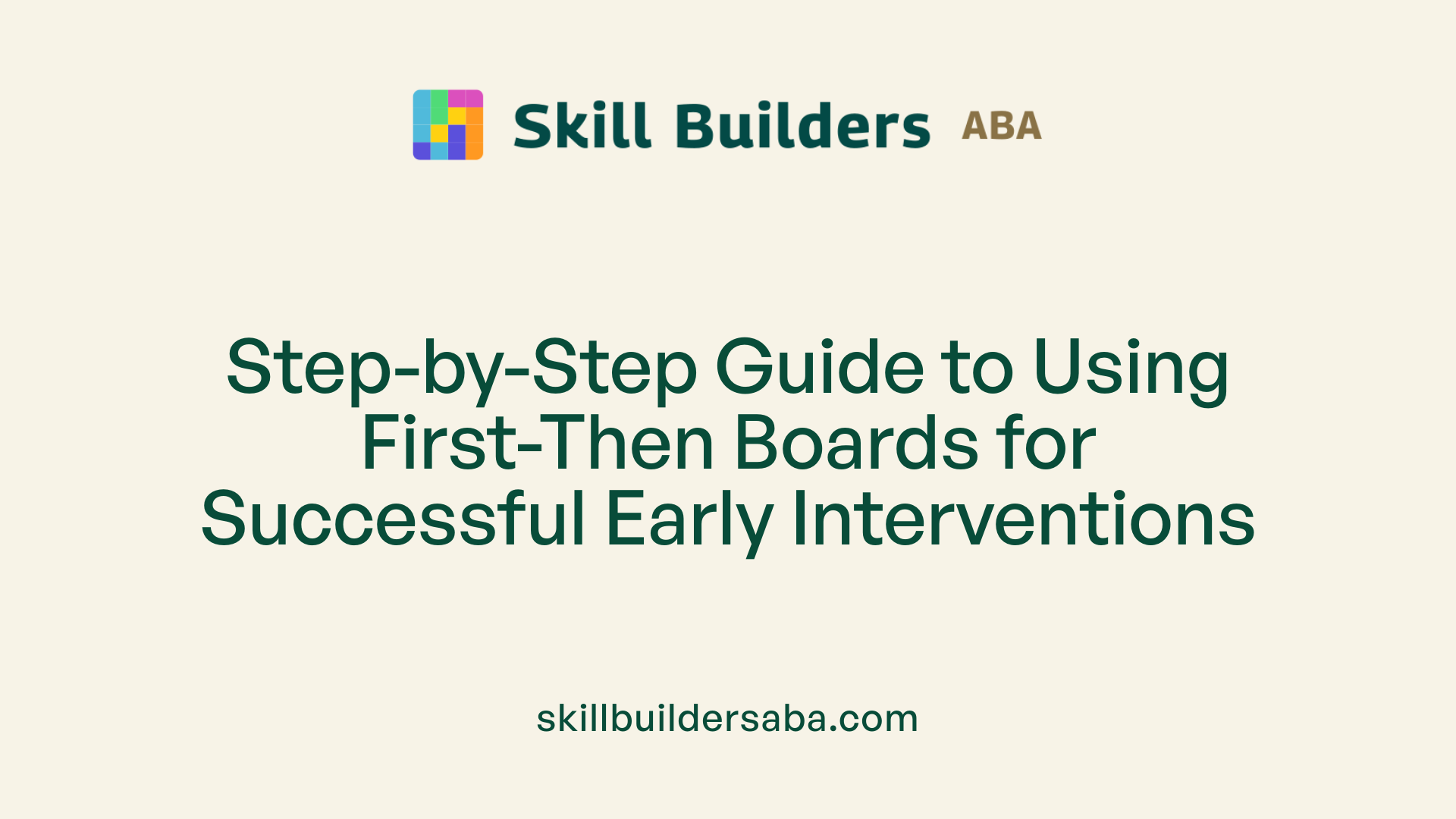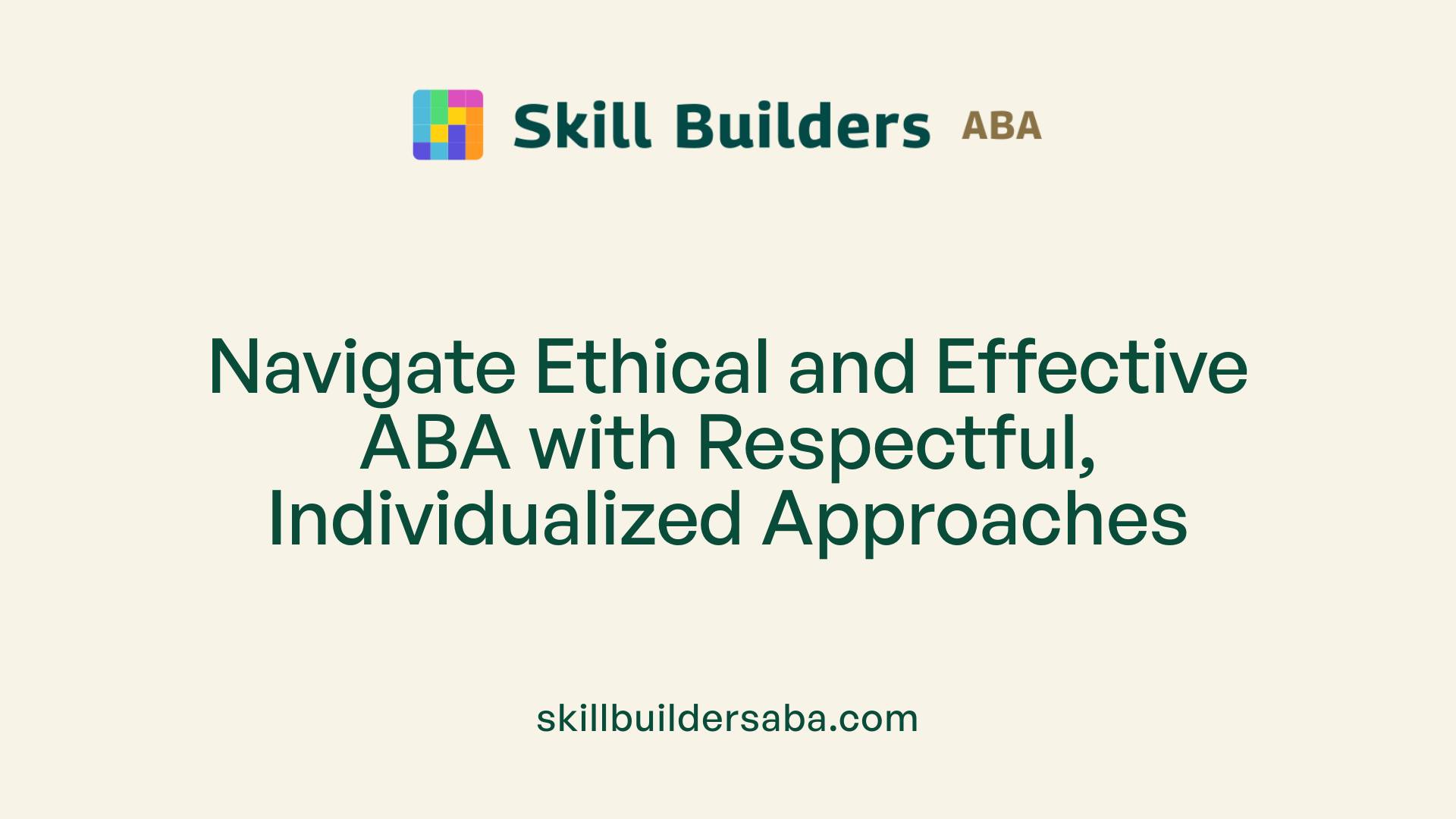How to use first-then boards in early ABA
Using First-Then Boards to Enhance ABA Therapy for Early Learners

Introduction to First-Then Boards in ABA Therapy
Applied Behavior Analysis (ABA) therapy is a foundational approach for supporting children with autism, focusing on skill development and behavior modification through structured, evidence-based methods. First-then boards are an effective visual tool within ABA that help motivate children to complete less preferred tasks by linking them sequentially to more favored activities. This article explores how first-then boards are used in early ABA interventions, their benefits in supporting transitions and independence, and best practices for implementation within therapy sessions.
Understanding ABA Therapy and Its Role in Autism Support

What is Applied Behavior Analysis (ABA) therapy and how does it help individuals with autism?
Applied Behavior Analysis (ABA) therapy is a science-driven approach that uses learning and behavior principles to support individuals with autism. It focuses on building new skills—like communication, social interaction, and daily living tasks—and reducing problematic behaviors. ABA programs are personalized, assessing each person’s unique needs. Techniques such as positive reinforcement encourage desired behaviors by rewarding them, making learning more motivating. Therapists use tools like the ABCs (antecedent, behavior, consequence) to analyze behavior causes and effects. ABA can be delivered in both structured settings and everyday environments, aiming to increase independence and improve quality of life.
Who typically provides ABA therapy and what qualifications do they have?
ABA therapy is delivered by qualified professionals, including Board Certified Behavior Analysts (BCBAs), therapists, and trained technicians. Providers usually have a master's degree in psychology, education, or related fields. They earn BCBA certification, which requires completing 1,500-2,000 hours of supervised fieldwork. This ensures they are skilled in behavioral assessment, intervention design, and reinforcement strategies. Licensing rules vary by location but often include continuing education to maintain expertise. These qualifications help ensure effective and evidence-based care.
How is the effectiveness of ABA therapy measured?
Effectiveness is gauged through systematic data collection and ongoing monitoring. Therapists track behaviors and skills using charts, skill tests, and standardized tools like the Vineland Adaptive Behavior Scales or the VB-MAPP. Some use technology, such as the Patient Outcome Planning Calculator (POP-C), to tailor treatment intensity. Data analyses involve graphing and comparing progress over time, helping to evaluate if targeted behaviors improve and guide treatment adjustments.
What types of behaviors or skills are commonly targeted in ABA therapy for autism?
ABA targets a blend of skills and behaviors. Communication improvements may include requesting items and engaging in conversations. Social skills work on recognizing emotions and interactive play. Independence is fostered in tasks such as toileting, dressing, and hygiene. It also focuses on community-ready skills like safety awareness. Behavior reduction strategies decrease harmful or disruptive actions using positive reinforcement. Foundational abilities like attention and memory are also addressed. Goals are highly individualized to support meaningful, functional growth for each person.
What Are First-Then Boards and Why Are They Effective?

What Is a First-Then Board?
A first-then board is a visual tool designed to motivate children, especially those with autism, to complete less preferred tasks by clearly linking them to more preferred activities. It visually presents a sequence: "First" represents the activity that needs to be done, and "Then" shows the reward or preferred activity that follows it. This helps create a structured and predictable environment.
How Does It Connect to the Premack Principle?
This approach is based on the Premack Principle, which states that a high-probability behavior (something a child likes) can reinforce a low-probability behavior (a less preferred task). For example, "First complete worksheet, then play with blocks" uses the child's motivation to encourage task completion.
Benefits for Motivation and Engagement
The first-then board enhances motivation by making expectations clear and attainable. It supports transitions between activities, increases independence, and reduces the need for verbal prompts. Children become more engaged in therapy and learning when they understand what is expected and what they will gain.
Use of Visual Supports for Clarity and Transition
Visual aids such as photos, icons, objects, or simple drawings are used alongside verbal instructions to improve understanding, especially for children with language delays. These visuals make abstract concepts concrete, help with processing, and reduce frustration during transitions.
Examples of First-Then Statements
Typical statements include:
- "First clean up, then snack"
- "First shoes on, then outside"
- "First potty, then story"
- "First brush teeth, then tablet"
Such clear, consistent language paired with visuals helps children anticipate routine and encourages positive behavior.
Implementing First-Then Boards in Early ABA Interventions

Preparation before using boards (identifying preferences, difficulty level)
Before introducing a first-then board, it's important to identify the child's preferred activities. These serve as motivating reinforcers following less preferred tasks. Equally critical is ensuring the initial activity is appropriately achievable for the child's developmental level to prevent frustration. Prompting strategies may be used initially to support task completion but should be gradually faded to encourage independence.
How to present the board and sequence
The first-then board should be presented clearly and explicitly. The therapist or caregiver points to the 'first' activity the child needs to complete, followed by the 'then' activity that will come next. Using consistent language like "First we ___, then we ___" helps the child process the sequence and develop routine understanding.
Using appropriate visual formats based on child’s abilities
Visual formats of the board can be tailored to fit individual needs—photographs, miniature or actual objects, and text can all be used. Non-readers benefit greatly from picture icons or objects, while readers might use written words or a combination of visuals and text. Velcro-backed cards or laminated visuals empower children to engage by removing or flipping cards themselves.
Ensuring the preferred activity is immediately available after first task
A successful first-then board guarantees the preferred 'then' activity follows immediately after the completion of the 'first' task. This immediacy strengthens the connection between effort and reward, reinforcing the behavior.
Duration management of activities for reinforcing sequence
To strengthen the motivation sequence, the preferred 'then' activity is typically kept shorter in duration than the initial 'first' activity. This approach helps maintain the child's focus on completing the less preferred task to quickly earn the more preferred reward.
Incorporating choice boards and fading prompts
Choice boards can be paired with first-then boards to offer children options for their reinforcement, further enhancing motivation. Initially, verbal or physical prompts may be necessary to guide the child through tasks, but these prompts should be gradually faded. This fading process promotes independence and supports the child's ability to generalize and internalize motivation beyond the visual support.
Promoting Independence and Positive Behavior Through Consistent Use
Building independence in routine compliance
First-then boards help children understand expectations and transitions, which builds independence in daily routines. By clarifying what to do first and what follows next, children can anticipate steps and complete tasks with less adult intervention.
Using consistent language and format for trust and predictability
Consistent scripts such as "First we ___, then we ___" paired with visual supports create a predictable environment. Repetition of the same phrases and visual formats helps children with autism and other neurodivergent learners trust the process and better process information.
Role of the child in interacting with the board
Encouraging children to physically engage with the first-then board by flipping or removing cards fosters active participation and a sense of control. This involvement promotes engagement and helps deepen understanding of the activity sequence.
Gradual fading of board use to encourage natural reinforcement
Over time, prompts should be faded so that the child begins to rely less on the board and more on natural consequences and intrinsic motivation. This gradual removal strengthens lasting independent motivation and supports skill generalization.
Integrating first-then boards with daily schedules and other visual supports
First-then boards are effective when used alongside broader visual schedules that outline entire routines. Integration of these tools throughout the classroom or therapy environment promotes consistency and helps children manage transitions and comply with expectations more independently.
Considerations, Challenges, and Ethical Aspects in ABA and First-Then Board Use

Are there any controversies or criticisms regarding ABA therapy for autism?
Applied Behavior Analysis (ABA) therapy, including tools like first-then boards, faces several notable controversies. Some critics—especially autistic self-advocates—argue that ABA can be too intense and rigid. They express concerns that the therapy focuses on making children conform to neurotypical behaviors, potentially suppressing natural expressions such as stimming and risking emotional distress. Historically, early ABA techniques sometimes involved aversive methods like electric shocks, though contemporary ABA emphasizes positive reinforcement and individualized goals.
Importance of ethical, individualized therapy
Ethical ABA practice centers on respecting each child’s individuality and preferences. Therapy should empower rather than force compliance, aiming to increase independence and improve quality of life. When using first-then boards, it’s vital that activities are tailored to the child’s interests and abilities, ensuring motivation does not come at the expense of well-being. Gradual fading of explicit prompts fosters natural motivation and autonomy.
Patience as children learn the system
Learning to use visual supports like first-then boards requires patience. Children may need time to understand the structure and expectations, especially if they have language or processing differences. Consistent language such as "First we ___, then we ___" helps build predictability and trust.
Supporting parents and caregivers in board use
Effective implementation extends beyond therapy sessions. Therapy providers often coach parents and caregivers to use first-then boards consistently at home. This support helps maintain clear communication, reduces frustration, and promotes generalization of skills across environments.
Ensuring motivation respects the child’s preferences and well-being
Choosing preferred activities as reinforcers is fundamental. The "then" activity must be meaningful and immediately available after the "first" task, but also balanced to prevent overuse or stress. Encouraging children to select or help manage the board increases engagement and honors their autonomy.
In sum, while ABA therapy, including first-then boards, can benefit children with autism by clarifying expectations and supporting transitions, it must be implemented thoughtfully. Prioritizing ethical practices, individualized goals, ongoing support, and patience ensures these visual tools are used in a respectful and effective manner.
Summary and Best Practices for First-Then Boards in ABA
First-then boards are a powerful, evidence-based visual strategy used within early ABA therapy to motivate children with autism, support transitions, and build independence. Rooted in behavioral principles like the Premack Principle, these boards use clear, consistent visual cues paired with verbal instructions to enhance understanding and engagement. Successful implementation involves careful selection of preferred activities, explicit presentation of sequences, and gradual fading to promote natural motivation. While ABA therapy has faced critiques, ethically grounded, individualized approaches incorporating tools such as first-then boards help foster positive behavior and skill acquisition. For therapists and caregivers alike, commitment to patience, consistency, and respecting each child's unique preferences is key to maximizing benefits and empowering young learners on their developmental journey.
References
- First-Then Board Tip Sheet
- Teaching with First/Then (Premack Principle)
- Using First/Then Statements to Support Young Children
- Visual Schedule Series: First-Then Schedules (Freebie!!)
- How to Use a First Then Board
- A Tool for Determining Treatment Dosage in Applied ...
- Efficacy of Interventions Based on Applied Behavior ...
.svg)













